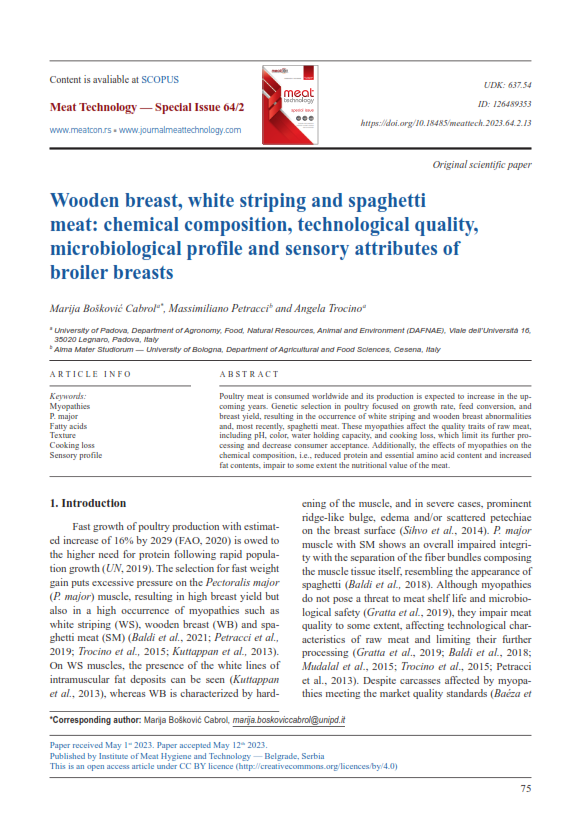Wooden breast, white striping and spaghetti meat: chemical composition, technological quality, microbiological profile and sensory attributes of broiler breasts
Keywords:
myopathies, P. major, fatty acids, texture, cooking loss, sensory profile
Abstract
Poultry meat is consumed worldwide and its production is expected to increase in the upcoming years. Genetic selection in poultry focused on growth rate, feed conversion, and breast yield, resulting in the occurrence of white striping and wooden breast abnormalities and, most recently, spaghetti meat. These myopathies affect the quality traits of raw meat, including pH, color, water holding capacity, and cooking loss, which limit its further processing and decrease consumer acceptance. Additionally, the effects of myopathies on the chemical composition, i.e., reduced protein and essential amino acid content and increased fat contents, impair to some extent the nutritional value of the meat.

Published
2023-11-01
How to Cite
Bošković Cabrol, M., Petracci, M., & Torcino, A. (2023). Wooden breast, white striping and spaghetti meat: chemical composition, technological quality, microbiological profile and sensory attributes of broiler breasts. Scientific Journal "Meat Technology", 64(2), 75-81. https://doi.org/10.18485/meattech.2023.64.2.13
Section
Review paper




